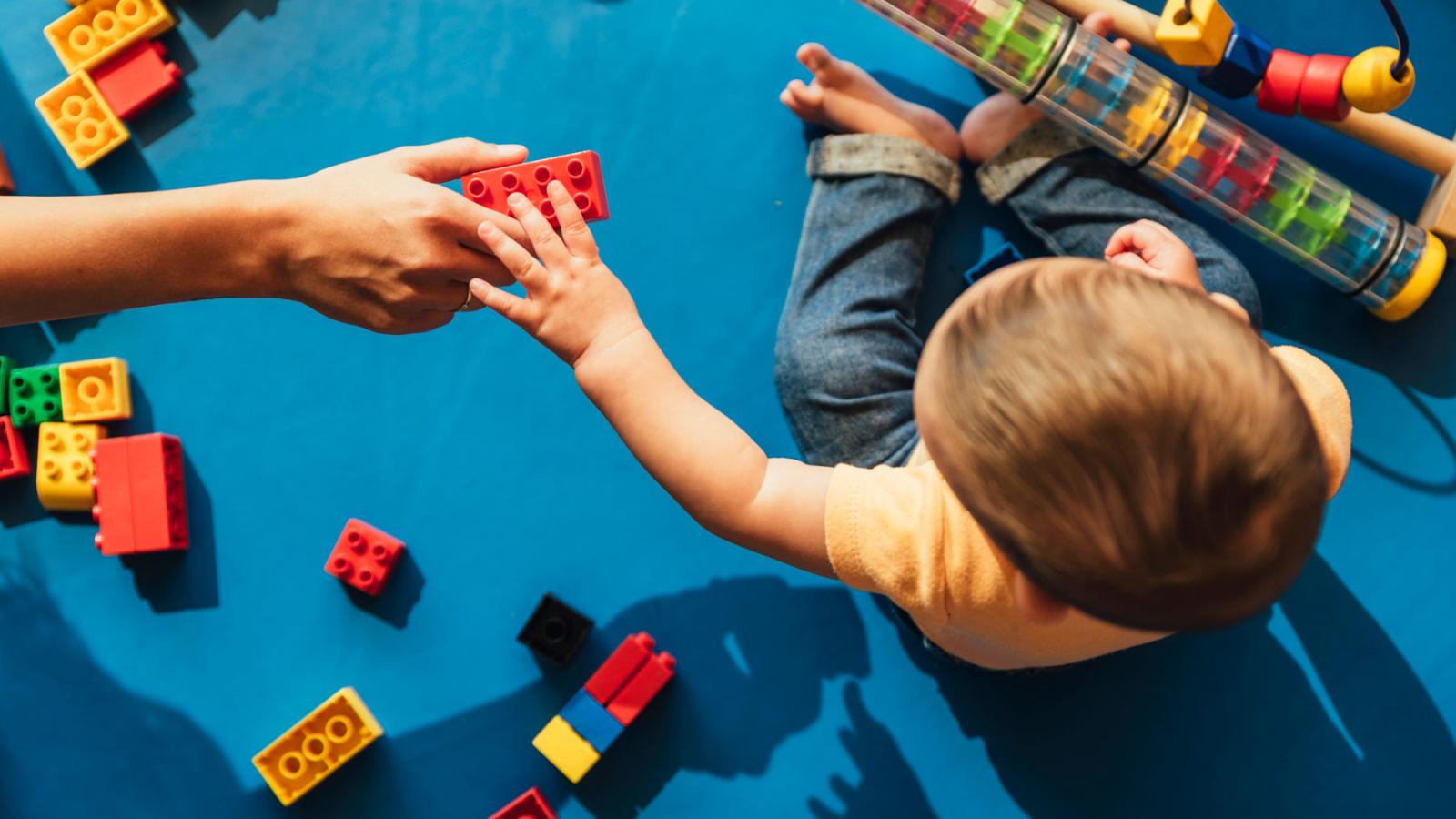Banner

Title
resources
Resource Library
Our Resource Library contains materials and assistance for early childhood educators and those they serve. Explore our selection of podcasts, tip sheets, websites, documents, and self-study courses.
Results: Page 19 of 52
| Resource Name | Description | Resource Type |
|---|---|---|
| Early Stem Education | Research shows that early exposure to STEM has positive impacts across the entire spectrum of learning. For example, early math knowledge not only predicts later math success, it also predicts later reading achievement (National Research Council, 2012). Despite these powerful findings, our schools and early childhood programs often lack knowledge, resources, and capacity to focus on early STEM learning in developmentally appropriate ways. Here are some informative resources from the U.S. Department of Education. | |
| Early Steps | Early Steps, within the Division of Children's Medical Services, serves families with infants and toddlers, birth to 36 months of age, who have developmental delays or an established condition likely to result in a developmental delay. Each child receives an Individualized Family Support Plan (IFSP) that meets his or her needs. Families and caregivers also receive support to develop the skills and confidence they need to help their children learn and develop. | Website |
| Easy, outdoor winter activities for Toddlers | "Below you’ll find play and outdoor activity ideas to keep your toddlers outside and having fun this winter." | Website |
| Educational Activities, Inc. | Educational Activities is proud to bring you some of the best-loved and most unique educational CD's, DVD's, Videos and Children's Books available. From preschool legends such as Hap Palmer and Ella Jenkins to Middle School Science DVD's to Adult Job Skills Videos to Professional Development Videos and DVD's -- we continue to publish the most up-to-date educational activities for students of all ages. | Website |
| Effective Classroom Practice: Infants and Toddlers | "During the earliest years, infants and toddlers interact primarily with people. Their interactions with toys are usually in the context of human interaction as well. They need to freely explore, manipulate, and test everything in the environment. Increasingly in today’s world, this includes the exploration of technology tools and interactive media." Here is a guide for the use of technology: Selected Examples of Effective Classroom Practice Involving Technology Tools and Interactive Media from NAEYC. | Document |
| Effective Discipline to Raise Healthy Children | Corporal punishment – or the use of spanking as a disciplinary tool –increases aggression in young children in the long run and is ineffective in teaching a child responsibility and self-control. In fact, new evidence suggests that it may cause harm to the child by affecting normal brain development. Other methods that teach children right from wrong are safer and more effective. This article is from Robert D. Sege, Benjamin S. Siegel, Council on Child Abuse and Neglect and the Committee on Psychosocial Aspects of Child and Family Health. | Document |
| El papel del entorno en el desarrollo del infante y del niño (The Role Of The Environment On Infant And Toddler Development) | Aprenda a organizar un espacio de aprendizaje que fomente el crecimiento y el desarrollo de bebés y niños en este autoestudio en línea. Examine los principios fundamentales descritos en el enfoque del STORY (cuento en español) para crear un espacio que satisfaga las necesidades de los niños y adultos que comparten el espacio:• Seguridad y protección• El entorno como “tercer maestro” • El ambiente exterior • Recursos para el aprendizaje: Diseño y materiales • Usted, como un/una individualÁrea del marco de conocimientos y competencias - II.A: Creación de experiencias de aprendizaje positivas Área de contenido de CDA - II: pasos para avanzar en el desarrollo físico e intelectual de los niños Este curso es accesible desde un dispositivo móvil. Para un rendimiento óptimo, se recomienda verlo desde una computadora o tableta.Para diez horas en su Registro de aprendizaje, regístrese y pague en línea en Develop. Luego, complete un documento de reflexión de 500 palabras y envielo con su reflexión. Tenga en cuenta que únicamente tiene acceso a ese documento como modo de visualización. Para habilitar la edición, descargue el documento. Haga clic en "archivo" y luego en "descargar como" en la esquina superior izquierda de esta pantalla. Esto le dará la opción de abrir el documento como un documento de Word en su propia computadora. Luego, puede completar la información y enviarla por correo electrónico a: credit@inclusivechildcare.org. * Haga caso omiso de las instrucciones con respecto a un examen final. La única evaluación de aprendizaje necesaria es el documento de reflexión. | Course |
| Electronic Baby Toys Associated with Decrease in Quality and Quantity of Language in Infants | Electronic toys for infants that produce lights, words and songs were associated with decreased quantity and quality of language compared to playing with books or traditional toys such as a wooden puzzle, a shape-sorter and a set of rubber blocks, according to this article. | Document |
| Electronic vs. Print Books: Which is Better For Kids? | Today’s parents have choices when deciding which type of books to read to their toddlers. But is there a difference between high-tech electronic books and old-school print? A new study shows that there is, and the results might surprise you. | Document |
| Elementos esenciales de los entornos para infantes y niños pequeños: # 3 Exploración y respeto iniciados por el niño (Essential Elements of Infant &Toddler Environments: #3 Child-Initiated Exploration and Respect) | El tercero de una serie de seis elementos esenciales en el diseño de ambientes para infantes y niños pequeños. The third in a series of six essential elements in designing environments for infants and toddlers. | Tipsheet |
Results: Page 19 of 52